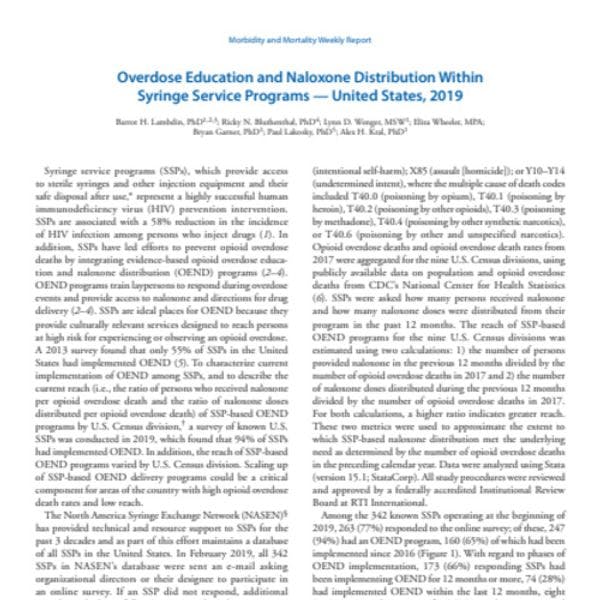Éducation aux overdoses et à la distribution de naloxone au sein des programmes de service de distribution de matériel stérile – États-Unis 2019
Barrot et al. constatent une augmentation de l'éducation aux surdoses d'opiacés et de la distribution de naloxone au sein des programmes d'échange de matériel stérile aux États-Unis, mais la couverture reste inégale. Pour en savoir plus, en anglais, veuillez lire les informations ci-dessous.
By Barrot H. Lambdin, PhD; Ricky N. Bluthenthal, PhD; Lynn D. Wenger, MSW; Eliza Wheeler, MPA; Bryan Garner, PhD; Paul Lakosky, PhD; Alex H. Kral, PhD
Summary
What is already known about this topic?
In 2013, 55% of U.S. syringe service programs (SSPs) had implemented overdose education and naloxone distribution (OEND).
What is added by this report?
In 2019, among 263 SSPs responding to an online survey, 247 (94%) had implemented OEND. The number of persons who received naloxone per opioid overdose death and the number of naloxone doses distributed per opioid overdose death during the previous year varied by census division.
What are the implications for public health practice?
Maximizing participants engaged in OEND and naloxone doses distributed to SSP participants might help to optimize SSP-based OEND programming. Scaling up SSP-based OEND delivery could be a critical component for areas of the country with high opioid overdose death rates.
